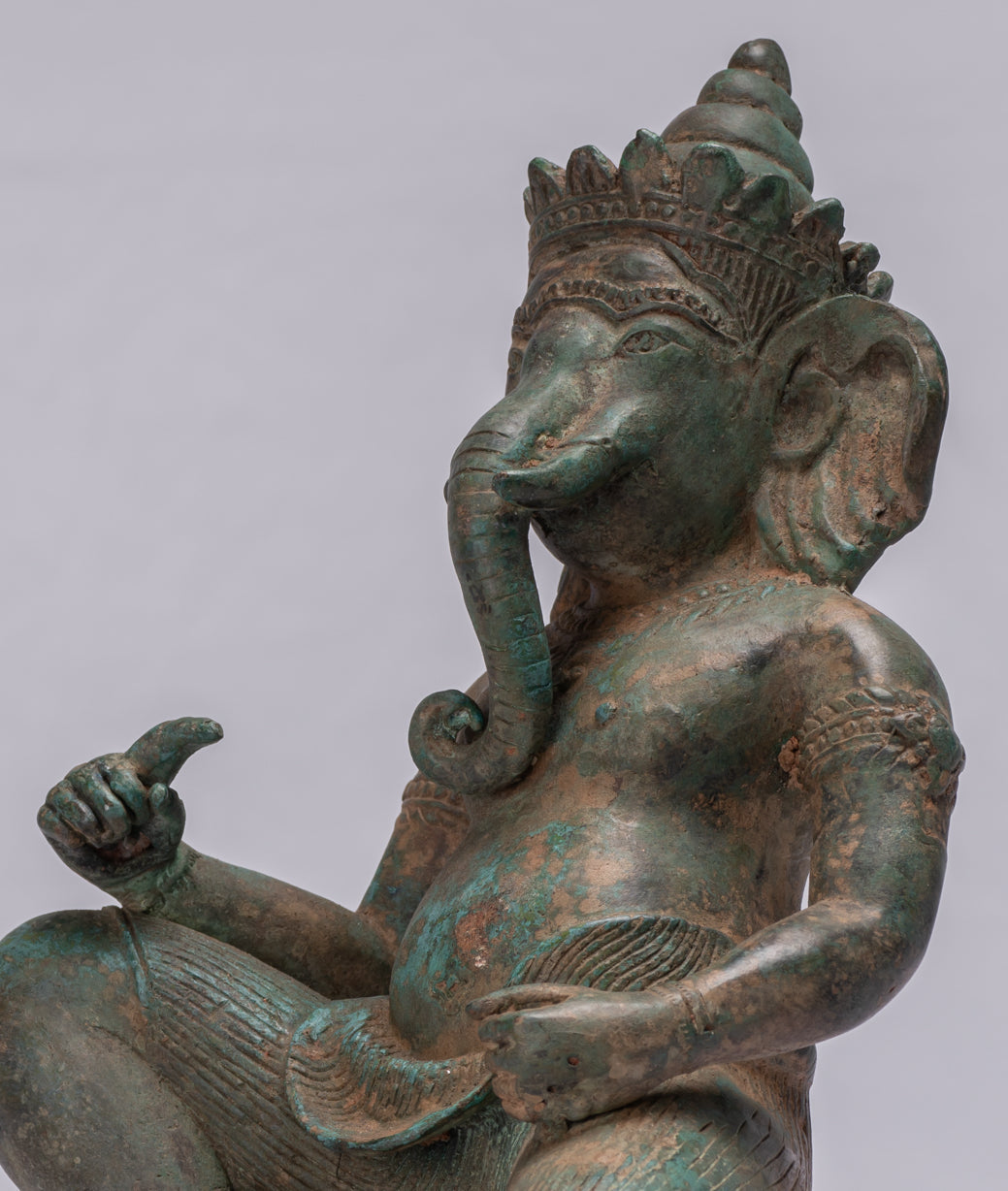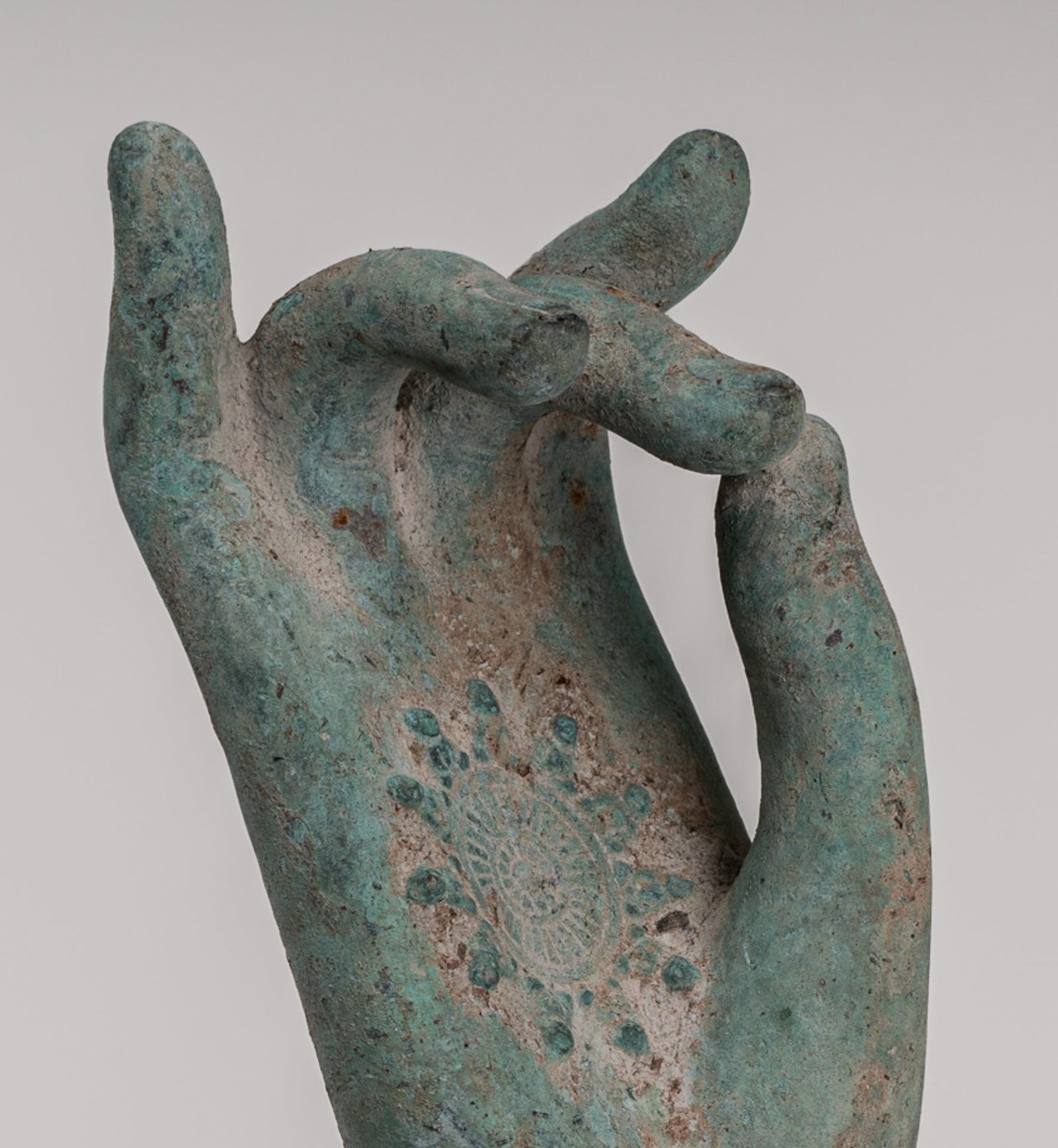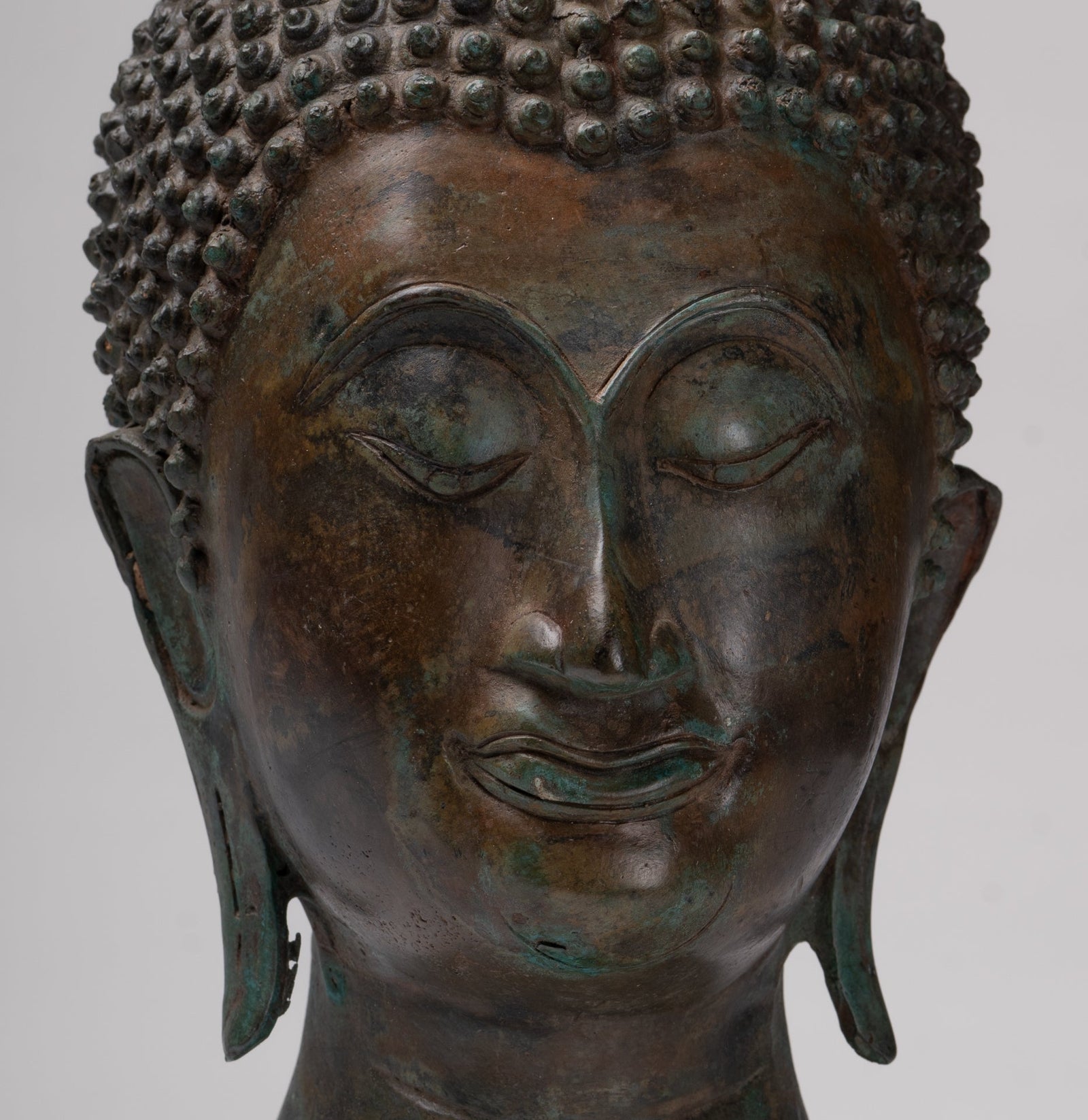-
Antique Indonesian Style Standing Bronze Javanese Shiva Statue - 24cm/10"
Measures (Height) 24cm/10"
An Indonesian (Java) enthroned Shiva in 13th century Majapahit style.
Shiva is stood samabhanga on a round lotus petal pedestal, which is itself presented on a decorated square pedestal. He is dressed in a simple robe, with a sash tied around his waist and is wearing a number of pieces of ornate jewellery, including crown and earrings.
As the destroyer, Shiva is regarded as limitless, transcendent and unchanging. Shiva is also regarded as the patron god of yoga, meditation and arts. Shiva is part of the Hindu holy trimurti which includes Brahma and Vishnu.
The Trilochana of Shiva can be seen on his forehead - the Three-Eyed Lord. It is the eye of wisdom, free from Maya, the illusion, and duality of life. It is also believed to be the source of his untamed energy.
Here he has 6 arms holding fly whisk, mala beads and Kalasha. The kalasha is considered a symbol of abundance and "source of life" in the Vedas. It is referred to as "overflowing full vase" in the Vedas.
The Kalasha is believed to contain amrita, the elixir of life, and thus is viewed as a symbol of abundance, wisdom, and immortality.
One hand is held in the dharmachakra mudra. In sanskrit dharmachakra means the 'Wheel of Dharma'. This mudra symbolises one of the most important moments in the life of Buddha, the occasion when he preached to his companions the first sermon after his Enlightenment in the Deer Park at Sarnath. It therefore denotes the setting into motion of the Wheel of the teaching of the Dharma. In this mudra the thumb and index finger touch at their tips to form a circle. This circle represents the Wheel of Dharma, or in metaphysical terms, the union of method and wisdom. This symbolises generosity.
His hair is piled in a tripartite chignon decorated with a cockade and is discretely adorned with only. necklace, diamond shaped earrings, a Yajnopavita (Scared Brahmanical thread) and a single bangle on each wrist.
A flame rimmed aureole with lotus flower aureole can be seen behind the Shiva symbolizing his divinity.
Provenance: Ex- private Singapore collection. All items are guaranteed to be as described. A Certificate of Authenticity will accompany all purchases upon request.
SATISFACTION GUARANTEE - We have been offering SE Asian Art for many years and are proud of the reputation we have developed for fair and honest listings. However, if for any reason, whatsoever, you are unhappy with your purchase please just let us know and we will provide a full refund. We want you to be 100% happy with your purchase.
-
The majority of orders will be shipped with DHL. This is a secure, express and fully tracked service.
Items less than 2Kg we typically ship using Royal Mail.
Once we receive your order we try to ship all orders the same or next working day.
Large and/or fragile pieces requiring palletising, specialist crating and/or extra packaging may take a little longer. Palletised shipments will be delivered curbside.
All orders over 35 GBP will be shipped free of charge.

-
We genuinely hope that all purchases delight.
However, if they do not, regardless of reason, we will refund all orders upon receipt of the unwanted item. Just notify us within 14 days of receiving your order that you wish to make a return and send the piece back to us with 30 days of delivery.
Let Us Help You Find The Piece You Desire
What Our Customers Think
The Bayon sculpture is amazing. I really enjoy it. And thank you for the careful shipping.
Sylvain, Paris, France
As I was travelling abroad I could only see and open the packages with the lingams today. They arrived safely and they are marvelous. Very happy to have been able to purchase them.
Philip, Maastricht, Netherlands
Hello! Thank you very much! The three Ganesha have just arrived. They are very beautiful and joyous :).
Christina, Bucahrest, Romania






























